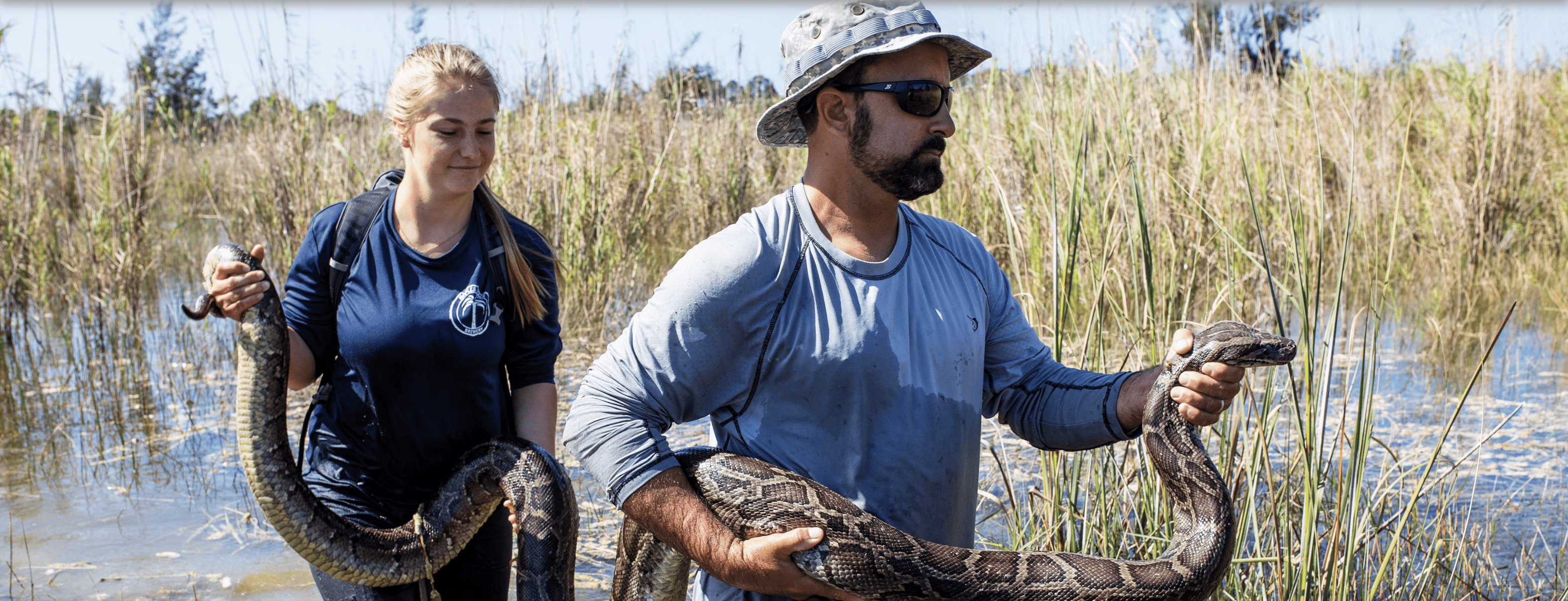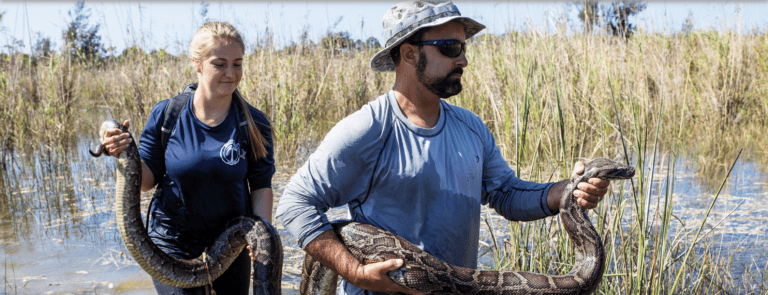Photo: Ian Bartoszek and Katie King recapture the 50-pound sentinel snake Johnny, who has led his minders to 18 adult Burmese pythons for removal. (Gena Steffens)
Bounty hunters and biologists wade deep into the Everglades to wrestle with the invasion of giant pythons threatening the state’s wetlands
In the Everglades, everything still looks the same. The waving saw grass, the cypress and pine trees draped with air plants, the high, white clouds parked like dirigibles above their shadows—if you’ve been to the Everglades before, and you go back, you’ll still find these. But now there is also a weird quiet. In the campsites of Everglades National Park, raccoons don’t rattle the trash can lids at four in the morning. Marsh rabbits don’t scatter with a nervous rustle on the hiking trails as you walk by. Tires don’t shriek when somebody brakes to avoid an opossum transfixed by headlights in the middle of the road. In fact, roadkill, which used to be common in this wildest part of Florida, is no longer seen.
The raccoons and marsh rabbits and opossums and other small, warmblooded animals are gone, or almost gone, because Burmese pythons seem to have eaten them. The marsh’s weird outdoor quiet is the deep, endlessly patient, laser-focused quiet of these invasive predators. About two feet long when hatched, Burmese pythons can grow to 20 feet and 200 pounds; they are among the largest snakes in the world. The pythons are mostly ambush hunters, and constrictors. They kill smaller animals by biting them on or near the head and suffocating them as they are swallowed. Larger animals are seized wherever is convenient, and crushed and strangled in the coils before and during swallowing. Large constrictor snakes have not existed in North America for millions of years. Native wildlife species had never seen them before, and may not recognize them as predators.
Roadkill, which used to be common in this wildest part of Florida, is no longer seen.
In Miami, a center of the exotic pet trade, dealers used to import them from Southeast Asia by the tens of thousands. It is now illegal to import or purchase Burmese pythons in Florida. Probably, at some point, python owners who no longer wanted to care for them let them go in the Everglades.
By the mid-1990s, the pythons had established a breeding population. For 25 years they have been eating any animals they can get their mouths around. Given the extremely stretchy cartilage joint connecting their jaws to their heads and their ability to extend their windpipe, snorkel-like, outside their […]
Full article: The Snakes That Ate Florida



